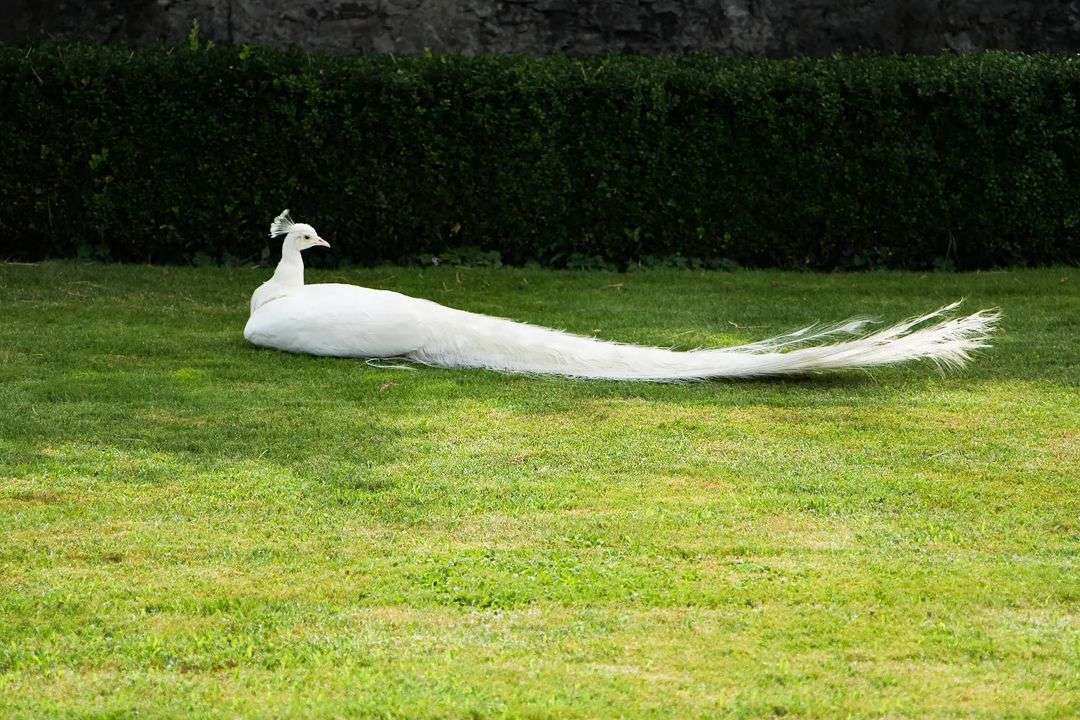One of the most commonly seen peacocks is known as the White Peacock. These birds can be found in gorgeous display of colors, with their elegant plumage and dazzling colors. These animals are charming, but not all peacocks come with this unique coat pattern.
And thus, White Peacocks are not albinos either. Albinos have a complete lack of pigment on their bodies and have very pale skin and red or pink eyes. White peacocks typically have blue eyes and darker, more pronounced feathers compared to albino peacocks
The White Peacock is a beautiful and rare animal that made for a great photo! This peacock has an amazing pattern and gets many comments from people who see it in person.
Quick Facts about White Peacocks

| Breed Name: | Pavo Cristatus |
| Color: | White |
| Place of Origin: | India |
| Lifespan: | 10–25 years |
| Male Size: | 39–45 inches |
| Female Size: | 37–40 inches |
| Uses: | Pest control, pets |
| Climate Tolerance: | Tropical |
| Care Level: | Moderate |
White Peacock Origins
Peafowl has been around for a really long time. They originally came from India and Ceylon but spread out all over Europe and America after the British Empire conquered India and they began breeding white peafowl in captivity.
White Peacocks Characteristics
Contrary to popular belief, White Peacocks are not different from Indian Blue Peacocks. The only difference is their different coloring – white males typically reach 39-45 inches in height and females at 37-40 inches. In captivity, White Peacocks have also been known to live up to 25 years. Peacocks have long and colorful tail feathers, which make up more than 60% of its total body. These feathers take up to 3 years to grow but do not exist in females.

Peafowl, on the whole, are docile and will rarely attack other animals. However, they can get aggressive during some instances and especially territorial when protecting their eggs – especially the peacocks. They will also attack other males during mating season. In general, peacocks are noisy birds and their distinctive pea-cock call can really draw attention! Their mating season tends to be noisy too, especially at night.
White Peacocks Appearance & Varieties

White peacocks are beautiful animal that has several variations of the color white. There are pure-white peacocks, a combination of white and the typical Indian Blue coloring (pied white), a variety of black shoulder colors with some having more than one type of color in it, and black shoulder – where there is only white found under the wings and chin.
Most white Peacock chicks are born with yellow pigmentation. However, a genetic mutation causes their feathers to lose this pigmentation & turn white instead. This is called Leucism, which only affects the feathers of these birds.
Are White Peacocks Good For Small Scale Farming?
Peafowls are sometimes eaten, but they are not raised as food animals because they don’t make good meat. The birds also grow slowly and produce fewer eggs than chickens of other breeds. The peafowl has become less popular due to their low egg production rates and tough meat in comparison to chickens.
Peafowl are typically used in two ways – either as a source of pest control or as pets.
How rare are white peacocks?
It’s estimated that there are only 100,000 Indian Blue Peafowl worldwide. Unfortunately, because of their current population, they are seen as rare. Since they only exist in captivity, it isn’t easy to get a firm number of how many White Peacocks exist in the world.
Conclusion: White Peacocks
White peacocks are one of the most rare, beautiful birds in the world. For those of us who have seen them, they’re extremely difficult to ever forget. There are only a few places where you can see these animals and scientists estimate that fewer than 80 such birds exist in captivity
Read Also: Can My Dog Eat Orange Peels?

Leave a Reply